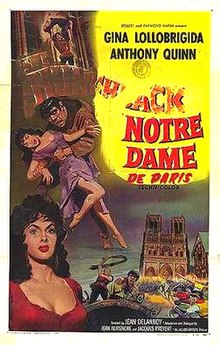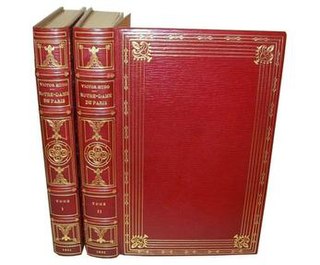
The Hunchback of Notre-Dame is a French Gothic novel by Victor Hugo, published in 1831. The title refers to the Notre-Dame Cathedral, which features prominently throughout the novel. It focuses on the unfortunate story of Quasimodo, the Roma street dancer Esmeralda and Quasimodo's guardian the Archdeacon Claude Frollo in 15th-century Paris. All its elements—the Renaissance setting, impossible love affairs and marginalized characters—make the work a model of the literary themes of Romanticism.

The Hunchback of Notre Dame is a 1996 American animated musical drama film produced by Walt Disney Feature Animation and released by Walt Disney Pictures. It is loosely based on the 1831 novel of the same name by Victor Hugo. The film was directed by Gary Trousdale and Kirk Wise and produced by Don Hahn, from a screenplay written by Tab Murphy, Irene Mecchi, Jonathan Roberts, and the writing team of Bob Tzudiker and Noni White. Featuring the voices of Tom Hulce, Demi Moore, Tony Jay, and Kevin Kline, the film follows Quasimodo, the deformed and confined bell-ringer of Notre Dame, and his yearning to explore the outside world and be accepted by society, against the wishes of his cruel, puritanical foster father Claude Frollo, who also wants to exterminate Paris' Roma population.
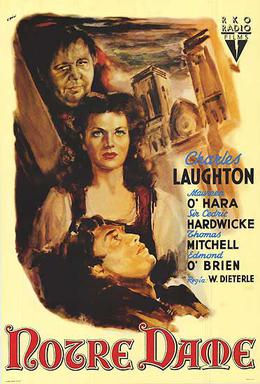
The Hunchback of Notre Dame is a 1939 American romantic drama film starring Charles Laughton and Maureen O'Hara. Directed by William Dieterle and produced by Pandro S. Berman, the film is based on Victor Hugo's 1831 novel. The film is also noted for being the first film ever shown at the Cannes Film Festival before the rest of the festival was cancelled due to the start of World War II.

Quasimodo is a fictional character and the main protagonist of the novel The Hunchback of Notre-Dame (1831) by Victor Hugo. Quasimodo was born with a hunchback and feared by the townspeople as a sort of monster, but he finds sanctuary in an unlikely love that is fulfilled only in death.
Clopin Trouillefou is a fictional character first created in the 1831 novel The Hunchback of Notre-Dame by French author Victor Hugo, and subsequently adapted.
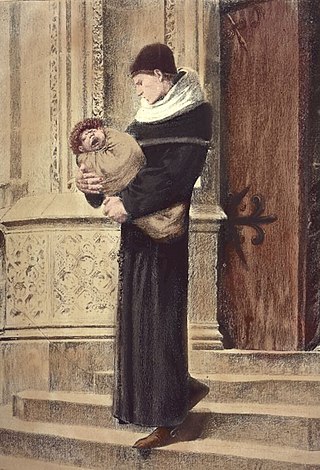
Claude Frollo is a fictional character and the main antagonist of Victor Hugo's 1831 novel The Hunchback of Notre-Dame. He is an alchemist and intellectual, as well as a Catholic clergyman.
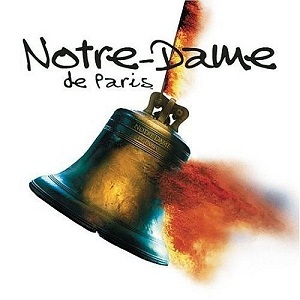
Notre-Dame de Paris is a sung-through French musical which debuted on 16 September 1998 in Paris. It is based upon the novel Notre-Dame de Paris by the French novelist Victor Hugo. The music was composed by Riccardo Cocciante and the lyrics are by Luc Plamondon.

The Hunchback of Notre Dame is a 1982 American romantic drama TV film based on Victor Hugo's 1831 novel. Filming location was Pinewood Studios, England. It was directed by Michael Tuchner and Alan Hume and produced by Norman Rosemont and Malcolm J. Christopher. It starred Anthony Hopkins, Derek Jacobi, Lesley-Anne Down and John Gielgud. The film was produced as part of the long-running Hallmark Hall of Fame series and was televised on CBS on February 4, 1982.

The Hunchback of Notre Dame II is a 2002 American animated musical film directed by Bradley Raymond. It is a direct-to-video sequel to Disney's 1996 animated feature film The Hunchback of Notre Dame. The film was produced by the Japanese office of Walt Disney Animation and Walt Disney Television Animation, while it was distributed by Walt Disney Studios Home Entertainment. Much of the actors from the original film reprise their roles, with the addition of new characters played by Jennifer Love Hewitt, Michael McKean and Haley Joel Osment. Critical reception was mostly negative.
Hellfire is a song from Disney's 1996 animated feature The Hunchback of Notre Dame. The song is sung by the film's main antagonist, Judge Claude Frollo, who is voiced by Tony Jay.

Esmeralda, born Agnès, is a fictional character in Victor Hugo's 1831 novel The Hunchback of Notre-Dame. She is a French Roma girl. She constantly attracts men with her seductive dances, and is rarely seen without her clever goat Djali. She is around 16 years old and has a kind and generous heart.

CapitainePhœbus de Châteaupers is a fictional character and the secondary antagonist of Victor Hugo's 1831 novel, Notre-Dame de Paris. He is the Captain of the King Louis XI's Archers. His name comes from Phoebus, the Greek god of the sun.

Judge Claude Frollo is a fictional character and the main antagonist of Disney's 34th animated film, The Hunchback of Notre Dame (1996). He was based on Archdeacon Claude Frollo from Victor Hugo's 1831 novel.
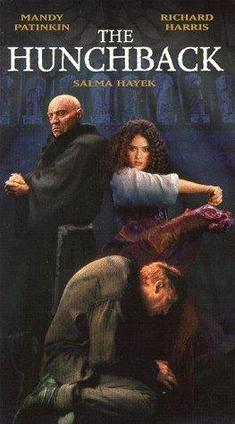
The Hunchback is a 1997 made-for-television romantic drama film based on Victor Hugo's iconic 1831 novel The Hunchback of Notre-Dame, directed by Peter Medak and produced by Stephane Reichel. It stars Richard Harris as Claude Frollo, Salma Hayek as Esmeralda and Mandy Patinkin as Quasimodo, the titular hunchback of Notre Dame.

The Hunchback of Notre Dame was a 1911 French film d'art silent film directed by Albert Capellani and produced by Pathé Frères. It was released under the name Notre-Dame de Paris. It starred Henry Krauss and Stacia Napierkowska. The film was based on the 1831 Victor Hugo novel of the same name. Considering the film's brief running time, critic Christopher Workman considered it "remarkably faithful to its source material" but it "contains no discernible humor, unlike most other horror films of the period, and thus represents a bellwether of sorts for the genre....(Henry Krauss as Quasimodo) "looks remarkably like Charles Ogle in (Thomas) Edison's 1910 Frankenstein."
Quasimodo d'El Paris is a 1999 French film that is a comedic adaptation of the 1831 novel The Hunchback of Notre Dame by Victor Hugo.
The Hunchback of Notre Dame is a British feature length adaptation of the 1831 novel by Victor Hugo, produced for television by the BBC in 1976 and aired on December 30 the same year. Directed by Alan Cooke and written by Robert Muller, the film stars Kenneth Haigh as Claude Frollo, Warren Clarke as Quasimodo and Michelle Newell as Esmeralda, and features the visual effects by Ian Scoones and the original music by Wilfred Josephs.
The Hunchback of Notre Dame is a 1986 Australian/American fantasy animated film and an adaptation of the 1831 novel of the same name by Victor Hugo.

La Esmeralda is a grand opera in four acts composed by Louise Bertin. The libretto was written by Victor Hugo, who had adapted it from his 1831 novel Notre-Dame de Paris. The opera premiered at the Théâtre de l'Académie Royale de Musique in Paris on 14 November 1836 with Cornélie Falcon in the title role. Despite the lavish production, the premiere was a failure, and La Esmeralda proved to be the last opera composed by Bertin, although she lived for another 40 years.

Esmeralda is an opera in four acts composed by Arthur Goring Thomas to an English-language libretto by Theo Marzials and Alberto Randegger based on Victor Hugo's 1831 novel The Hunchback of Notre-Dame. It premiered in London on 26 March 1883 at the Theatre Royal, Drury Lane with Georgina Burns in the title role and Barton McGuckin as her lover, Phoebus.
